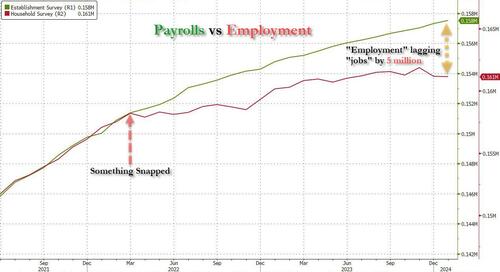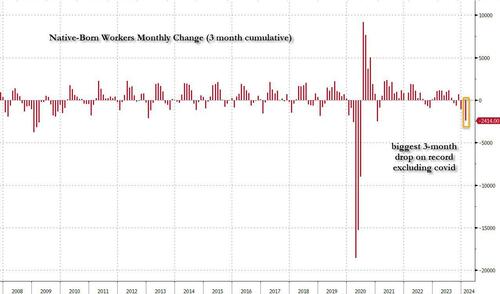There was more: it was around the summer of 2022 that the Biden labor department - in its zeal to show job growth no matter the cost,
or quality of jobs - also started fooling around with the composition of the labor market,
with most of the monthly gains going to part-time workers, even as full-time workers stagnated or declined. The culmination, as we reported earlier this month, is that in February 2024, the US had 132.9 million full-time jobs and 27.9 million part-time jobs. Which is great... until you look back one year and find that in February 2023 the US had 133.2 million full-time jobs, or more than it does one year later! And yes, all the job growth since then has been in part-time jobs, which have increased by 921K since February 2023 (from 27.020 million to 27.941 million).
In other words, starting in 2022 and accelerating to present days, less and less full-time jobs were added, until we got to the absurd situation that
all the new jobs in the past year have been part-time jobs!
And then there was, of course, the
great jobs replacement theory, only as we first showed well over a year ago,
it wasn't a theory but practice, and following countless months in which native-born workers lost their jobs, including a near-record 3-month plunge to start 2024...
... offset
by a record 1.2 million foreign-born (read immigrants, both legal and illegal but
mostly illegal)
workers added in February...





